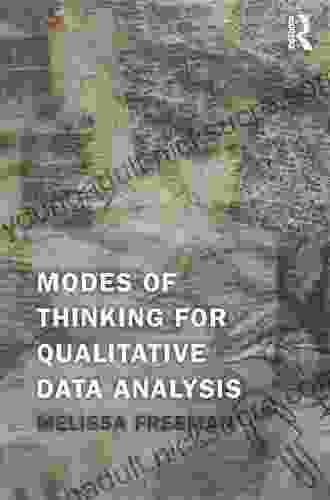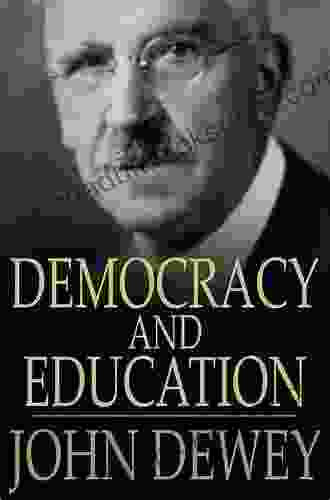Ethnicity and Cultural Change in Kenya: Case Studies in Anthropology

Kenya is a multi-ethnic society with over 40 different ethnic groups. The country's rich cultural diversity is a reflection of its long history of migration and interaction between different peoples. Over time, the ethnic groups of Kenya have developed their own unique identities, cultures, and traditions. However, these identities and cultures have also been shaped by the country's colonial and post-colonial history, as well as by globalization and other external factors.
4.1 out of 5
| Language | : | English |
| File size | : | 2286 KB |
| Text-to-Speech | : | Enabled |
| Screen Reader | : | Supported |
| Word Wise | : | Enabled |
| Print length | : | 192 pages |
This article explores the complex relationship between ethnicity and cultural change in Kenya, drawing on case studies from anthropology. It examines the ways in which ethnic identity has been shaped by historical, social, and economic factors, and how it has influenced cultural practices, values, and beliefs. The article also discusses the challenges and opportunities that arise from cultural change in a multi-ethnic society.
Historical and Social Factors
The ethnic groups of Kenya have been shaped by a long history of migration and interaction. The earliest inhabitants of the region were hunter-gatherers who arrived around 20,000 years ago. Over time, these groups were joined by pastoralists from the north and farmers from the south. The Bantu-speaking peoples arrived in Kenya around 1000 BC, and they逐渐合并了当地的狩猎采集者和牧民。
The arrival of the Bantu-speaking peoples had a profound impact on the ethnic landscape of Kenya. They brought with them new agricultural technologies and social practices, which led to the development of settled agricultural communities. They also introduced the concept of centralized political authority, which led to the emergence of kingdoms and chiefdoms.
The arrival of European colonizers in the 19th century had a further impact on ethnic relations in Kenya. The British colonialists imposed their own administrative and economic systems on the country, which led to the displacement of many indigenous peoples from their traditional lands. Colonization also led to the of new religions and educational systems, which further eroded traditional cultural practices.
After Kenya gained independence in 1963, the country's new leaders faced the challenge of building a unified nation out of a diverse population. They attempted to do this through a process of nation-building, which involved promoting a common national identity and culture. However, these efforts were often met with resistance from ethnic groups who feared that their own unique identities would be lost.
Economic Factors
Economic factors have also played a significant role in shaping ethnic identity and cultural change in Kenya. The country's economy has been heavily dependent on agriculture, and this has led to the development of strong regional identities based on agricultural practices and land ownership. In some cases, economic competition between different ethnic groups has led to conflict and violence.
The growth of the urban economy in recent years has also had an impact on ethnic relations in Kenya. Many people have migrated to cities in search of work, and this has led to the formation of new ethnic communities in urban areas. These communities have their own unique cultures and identities, which are often distinct from the traditional cultures of their rural counterparts.
Cultural Practices, Values, and Beliefs
The ethnic groups of Kenya have developed their own unique cultural practices, values, and beliefs. These include traditional forms of music, dance, art, and literature. They also include traditional systems of medicine, law, and religion.
Cultural practices, values, and beliefs are often passed down from one generation to the next through oral tradition. This process helps to ensure that the cultural heritage of each ethnic group is preserved. However, it can also lead to the perpetuation of negative stereotypes and prejudices about other ethnic groups.
In recent years, there has been a growing trend towards cultural assimilation in Kenya. This is due in part to the influence of mass media and globalization. As a result, many young people are adopting cultural practices, values, and beliefs that are different from those of their parents and grandparents.
Challenges and Opportunities
Cultural change in a multi-ethnic society presents both challenges and opportunities. On the one hand, it can lead to the loss of traditional cultures and values. On the other hand, it can also lead to the emergence of new and more inclusive cultural identities.
One of the biggest challenges facing Kenya today is how to preserve the country's rich cultural diversity while also promoting national unity. The government has attempted to do this through a number of policies and initiatives, including the establishment of a National Museums of Kenya and the promotion of cultural festivals. However, these efforts have often been met with resistance from ethnic groups who fear that their own unique identities will be diluted.
Another challenge facing Kenya is how to address the issue of ethnic conflict. In recent years, there have been a number of violent conflicts between different ethnic groups, particularly in the Rift Valley and coastal regions. These conflicts are often rooted in historical grievances and economic competition. The government has attempted to address these conflicts through a number of measures, including the establishment of peace committees and the creation of a Truth, Justice, and Reconciliation Commission. However, these efforts have had limited success.
Despite the challenges, there are also a number of opportunities that arise from cultural change in a multi-ethnic society. For example, cultural change can lead to the emergence of new and more inclusive cultural identities. It can also lead to the development of new forms of cultural expression and creativity.
Cultural change in Kenya is a complex and ongoing process. It is a process that is shaped by a variety of historical, social, economic, and cultural factors. It is also a process that presents both challenges and opportunities. The challenge is to find ways to preserve the country's rich cultural diversity while also promoting national unity. The opportunity is to create a more inclusive and just society for all Kenyans.
Ethnicity and cultural change are closely intertwined in Kenya. The ethnic groups of Kenya have developed their own unique identities, cultures, and traditions over the course of many centuries. However, these identities and cultures have also been shaped by the country's colonial and post-colonial history, as well as by globalization and other external factors.
Cultural change in Kenya presents both challenges and opportunities. On the one hand, it can lead to the loss of traditional cultures and values. On the other hand, it can also lead to the emergence of new and more inclusive cultural identities. The challenge is to find ways to preserve the country's rich cultural diversity while also promoting national unity. The opportunity is to create a more inclusive and just society for all Kenyans.
4.1 out of 5
| Language | : | English |
| File size | : | 2286 KB |
| Text-to-Speech | : | Enabled |
| Screen Reader | : | Supported |
| Word Wise | : | Enabled |
| Print length | : | 192 pages |
Do you want to contribute by writing guest posts on this blog?
Please contact us and send us a resume of previous articles that you have written.
 Fiction
Fiction Non Fiction
Non Fiction Romance
Romance Mystery
Mystery Thriller
Thriller SciFi
SciFi Fantasy
Fantasy Horror
Horror Biography
Biography Selfhelp
Selfhelp Business
Business History
History Classics
Classics Poetry
Poetry Childrens
Childrens Young Adult
Young Adult Educational
Educational Cooking
Cooking Travel
Travel Lifestyle
Lifestyle Spirituality
Spirituality Health
Health Fitness
Fitness Technology
Technology Science
Science Arts
Arts Crafts
Crafts DIY
DIY Gardening
Gardening Petcare
Petcare Ruby Lang
Ruby Lang Joy Williams
Joy Williams Ingrid S Clay
Ingrid S Clay Chris Chelios
Chris Chelios Andy Puddicombe
Andy Puddicombe David C Keehn
David C Keehn Ellen Frank
Ellen Frank Massimo Florio
Massimo Florio Michael Anthony
Michael Anthony Mark Verstegen
Mark Verstegen Dave Gray
Dave Gray Sharon Strand Ellison
Sharon Strand Ellison Michael Tomasello
Michael Tomasello Samuel B Green
Samuel B Green Roland A Boucher
Roland A Boucher Emily Souder
Emily Souder Dave Duncan
Dave Duncan David Goodman
David Goodman Rebecca Eanes
Rebecca Eanes Lidia Bastianich
Lidia Bastianich Robin Benway
Robin Benway Kent David Kelly
Kent David Kelly Karl E Peace
Karl E Peace Rod Powers
Rod Powers Christopher O Kennon
Christopher O Kennon Jennifer Bohnet
Jennifer Bohnet Leanne Ely
Leanne Ely Angela Smith
Angela Smith Johnson Egonmwan
Johnson Egonmwan Jeremy Klaff
Jeremy Klaff Dhonielle Clayton
Dhonielle Clayton Stephanie Land
Stephanie Land Sir Edmund Hillary
Sir Edmund Hillary Rachel Hutt Phd
Rachel Hutt Phd Ryan Bow
Ryan Bow Laura Hillman
Laura Hillman Judea Pearl
Judea Pearl Richard Bate
Richard Bate W Todd Woodard
W Todd Woodard Troy A Hill
Troy A Hill Rachel Kowert
Rachel Kowert Ben Bleiweiss
Ben Bleiweiss Angelo Lowery
Angelo Lowery Donna Mott
Donna Mott R E Burrillo
R E Burrillo Patrick Pickens
Patrick Pickens Elizabeth Kaledin
Elizabeth Kaledin Kenneth R Ginsburg
Kenneth R Ginsburg Barak Ariel
Barak Ariel Robin Yocum
Robin Yocum Dennis Rainey
Dennis Rainey Florian Freistetter
Florian Freistetter Robb Manning
Robb Manning Joel J Lerner
Joel J Lerner James M Johnston
James M Johnston Jessica Nordell
Jessica Nordell Jane M Healy
Jane M Healy Ron Douglas
Ron Douglas Charlotte Klaar Phd
Charlotte Klaar Phd Stephen Jungmann
Stephen Jungmann Christina Hillsberg
Christina Hillsberg Marilyn Burgos
Marilyn Burgos Carol Ann Gillespie
Carol Ann Gillespie Latonya J Trotter
Latonya J Trotter Lindsay Ford
Lindsay Ford Tiara Mcclure
Tiara Mcclure Judith Hoare
Judith Hoare Yuu Tanaka
Yuu Tanaka Howell Raines
Howell Raines Serena B Miller
Serena B Miller Jim Prime
Jim Prime Peter Townsend
Peter Townsend Rodney Paul
Rodney Paul George E Hein
George E Hein Sandy Tolan
Sandy Tolan D M Davis
D M Davis Elizabeth Foss
Elizabeth Foss Peter Gibson
Peter Gibson Michele Borba
Michele Borba Robert Zubek
Robert Zubek Jenny Smith
Jenny Smith Mandee Heller Adler
Mandee Heller Adler Howard Davis
Howard Davis Jerry Toner
Jerry Toner Tim Macwelch
Tim Macwelch Violet White
Violet White Siena Cherson Siegel
Siena Cherson Siegel Lisa Marie Mercer
Lisa Marie Mercer Baby Professor
Baby Professor Angela Stancar Johnson
Angela Stancar Johnson Kevin Hunter
Kevin Hunter Robert Kirk
Robert Kirk Miranda Green
Miranda Green Steve Hindman
Steve Hindman Jim Saccomano
Jim Saccomano Margaret M Quinlan
Margaret M Quinlan Keith Crowley
Keith Crowley Wynne Foster
Wynne Foster Angela C Wu
Angela C Wu Israelin Shockness
Israelin Shockness Muako Maepa
Muako Maepa Michael V Uschan
Michael V Uschan S L Macgregor Mathers
S L Macgregor Mathers Kari Marie Norgaard
Kari Marie Norgaard Murtaza Haider
Murtaza Haider Sam Bleakley
Sam Bleakley Thomas Golf
Thomas Golf Scott Meyer
Scott Meyer Thomas Gilovich
Thomas Gilovich Margaret Jordan Halter
Margaret Jordan Halter Caryl Say
Caryl Say Dr Eva Beaulieu
Dr Eva Beaulieu Guy Evans
Guy Evans Natalie Rhodes
Natalie Rhodes Bradley Charbonneau
Bradley Charbonneau Lee Cronk
Lee Cronk Rashaun Johnson
Rashaun Johnson George Noory
George Noory Rebecca P Cohen
Rebecca P Cohen Nikki Ace
Nikki Ace Johnny Molloy
Johnny Molloy Mark Wells
Mark Wells Stephen Lynch
Stephen Lynch Mometrix
Mometrix Elizabeth Hunter
Elizabeth Hunter Lois A Ritter
Lois A Ritter Seth Lloyd
Seth Lloyd Richard Hibshman
Richard Hibshman Kevin Thomas
Kevin Thomas Pete Dunne
Pete Dunne Mirabai Starr
Mirabai Starr Scott Turner
Scott Turner Paul Cobley
Paul Cobley Nathaniel Rich
Nathaniel Rich Kim Dragoner
Kim Dragoner Oliver Burkeman
Oliver Burkeman Tina Nelson
Tina Nelson Alberta Hawse
Alberta Hawse Nicholas D Kristof
Nicholas D Kristof Capn Fatty Goodlander
Capn Fatty Goodlander Robyn Wideman
Robyn Wideman Emily Nielson
Emily Nielson Rob Willson
Rob Willson Rufus Estes
Rufus Estes Stephen Rea
Stephen Rea Chris Santella
Chris Santella Christian Wiggins
Christian Wiggins Frank Deford
Frank Deford Susan Burton
Susan Burton Ariel Henley
Ariel Henley Peter Finch
Peter Finch Yvonne Choquet Bruhat
Yvonne Choquet Bruhat J D Swanson
J D Swanson Stephen Cheney
Stephen Cheney David Graeber
David Graeber Walter Beede
Walter Beede Teresa Parker
Teresa Parker Mary Pipher
Mary Pipher Karen Sternheimer
Karen Sternheimer Rachel Connelly
Rachel Connelly Bob Gordon
Bob Gordon Patrick Ejeke
Patrick Ejeke Stefanie K Johnson
Stefanie K Johnson Rebecca Serle
Rebecca Serle Rebecca Boggs Roberts
Rebecca Boggs Roberts Ryan Beck
Ryan Beck Angelo Chiari
Angelo Chiari Tovar Cerulli
Tovar Cerulli Dwight E Neuenschwander
Dwight E Neuenschwander Bernd Heinrich
Bernd Heinrich Ruth Benedict
Ruth Benedict Greg Prato
Greg Prato Gerard Siggins
Gerard Siggins Alessio Mangoni
Alessio Mangoni Avinash Navlani
Avinash Navlani Richard L Sites
Richard L Sites Jorge Ramos Mizael
Jorge Ramos Mizael Deborah Wall
Deborah Wall Kim West
Kim West Jay Griffiths
Jay Griffiths Tara Sim
Tara Sim Third Edition Kindle Edition
Third Edition Kindle Edition Mark Lester
Mark Lester Richard A Muller
Richard A Muller T R Fehrenbach
T R Fehrenbach Jessica Wolstenholm
Jessica Wolstenholm Alex Wolf
Alex Wolf Andy Tyson
Andy Tyson Gillian Price
Gillian Price Mark Kernion
Mark Kernion Mark W Steege
Mark W Steege Dawn Griffiths
Dawn Griffiths Mike Chambers
Mike Chambers Carlo Rovelli
Carlo Rovelli Julia Reed
Julia Reed Colby Coombs
Colby Coombs Dan Ariely
Dan Ariely Connie Schultz
Connie Schultz Andy Crowe
Andy Crowe Ashley Rickards
Ashley Rickards John C Maxwell
John C Maxwell Frederick Aardema
Frederick Aardema Tim O Connor
Tim O Connor Jay Matthews
Jay Matthews Ray Walker
Ray Walker Miles Olson
Miles Olson Marc Charles
Marc Charles Pete Sampras
Pete Sampras Robin Ray Green
Robin Ray Green Douglas Henderson Jr
Douglas Henderson Jr Scott Stillman
Scott Stillman Ellen J Langer
Ellen J Langer Joseph Phillips
Joseph Phillips Eric Schmitz
Eric Schmitz Anna Rashbrook
Anna Rashbrook Dean Beaumont
Dean Beaumont K Moriyasu
K Moriyasu Tim Larkin
Tim Larkin Sandra Steingraber
Sandra Steingraber Daniel Friedmann
Daniel Friedmann Tovah Feldshuh
Tovah Feldshuh Sam Fury
Sam Fury Katrina Cope
Katrina Cope Carlos Acevedo
Carlos Acevedo Humberto G Garcia
Humberto G Garcia Tim Thayne
Tim Thayne Emiko Jean
Emiko Jean Chef Maggie Chow
Chef Maggie Chow Joshua Clark
Joshua Clark Nick Bradley
Nick Bradley Fredrik Backman
Fredrik Backman Jason Hogan
Jason Hogan Jenna Blough
Jenna Blough United States Government Us Army
United States Government Us Army David Herres
David Herres Ashley P Martin
Ashley P Martin James Quinn
James Quinn Kristen Jervis Cacka
Kristen Jervis Cacka Angela Eckhoff
Angela Eckhoff Robert Urban
Robert Urban Derek M Steinbacher
Derek M Steinbacher Jeffrey Bernstein
Jeffrey Bernstein Viviana Altuve
Viviana Altuve Martin Volken
Martin Volken Ryan D Agostino
Ryan D Agostino Erin Moulton
Erin Moulton Andy Peloquin
Andy Peloquin William Ayers
William Ayers Richard Lee Byers
Richard Lee Byers Gary B Meisner
Gary B Meisner Jeff Mach
Jeff Mach Joe Peta
Joe Peta Ron Jeffries
Ron Jeffries Chuck Weikert
Chuck Weikert Angelo Tropea
Angelo Tropea Linda Sivertsen
Linda Sivertsen Jamie Kuykendall
Jamie Kuykendall Diana Nyad
Diana Nyad Liv Ryan
Liv Ryan Lynn Palm
Lynn Palm Rebecca Solnit
Rebecca Solnit Eliot Schrefer
Eliot Schrefer Madeleine Roux
Madeleine Roux Samir P Desai
Samir P Desai Donald N Yates
Donald N Yates Nicole Smith
Nicole Smith Jules Brown
Jules Brown Danil Zburivsky
Danil Zburivsky Karen Elliott House
Karen Elliott House Irene Gut Opdyke
Irene Gut Opdyke Kevin J Gaston
Kevin J Gaston Matt Vincent
Matt Vincent Ed Stafford
Ed Stafford Mitch Horowitz
Mitch Horowitz Shane O Mara
Shane O Mara Robert Lindsay
Robert Lindsay John Sonmez
John Sonmez Tirzah Price
Tirzah Price George Johnson
George Johnson Harry Fairhead
Harry Fairhead Lucy Postgate
Lucy Postgate Daddilife Books
Daddilife Books Joyce Yang
Joyce Yang Louis Martin
Louis Martin Stewart Shapiro
Stewart Shapiro Marie Myung Ok Lee
Marie Myung Ok Lee Marie Brennan
Marie Brennan Manik Joshi
Manik Joshi Donald R Prothero
Donald R Prothero Christina Reese
Christina Reese Cheryl Alkon
Cheryl Alkon Bret A Moore
Bret A Moore Lutz Hanseroth
Lutz Hanseroth John B Nici
John B Nici Germano Dalcielo
Germano Dalcielo Gregory J Davenport
Gregory J Davenport Laura Bogen
Laura Bogen Caspar Melville
Caspar Melville Belinda Norton
Belinda Norton George Megre
George Megre Jon Ronson
Jon Ronson Tom Dymond
Tom Dymond Cap N Fatty Goodlander
Cap N Fatty Goodlander Matthew D Dewar
Matthew D Dewar Arlin Smith
Arlin Smith Robert Dudley
Robert Dudley Jim Posewitz
Jim Posewitz Nicholas Epley
Nicholas Epley Angelina J Steffort
Angelina J Steffort Chip Heath
Chip Heath Petros Efthymiou
Petros Efthymiou Angel Millar
Angel Millar Aaron Wilson
Aaron Wilson Sabbithry Persad Mba
Sabbithry Persad Mba T L Payne
T L Payne Andrea Lankford
Andrea Lankford Diana Winston
Diana Winston M J Fievre
M J Fievre Kathryn Miles
Kathryn Miles Rodney Castleden
Rodney Castleden Richard Lemaster
Richard Lemaster Angel Burns
Angel Burns Mark J Musser
Mark J Musser Robyn Harding
Robyn Harding Afra J Zomorodian
Afra J Zomorodian Dan Heath
Dan Heath Judith S Beck
Judith S Beck Eugene P Northrop
Eugene P Northrop Christian Heath
Christian Heath Eli Wilson
Eli Wilson Shalabh Aggarwal
Shalabh Aggarwal Phil Burt
Phil Burt Christopher Nyerges
Christopher Nyerges Jeffrey Thurston
Jeffrey Thurston Andy Schell
Andy Schell Scott Alan Johnston
Scott Alan Johnston Mtg Editorial Board
Mtg Editorial Board Mark Remy
Mark Remy Bill Schneider
Bill Schneider Angela Leslee
Angela Leslee Donna Helen Crisp Jd Msn Rn Pmhcns Bc
Donna Helen Crisp Jd Msn Rn Pmhcns Bc Jeffrey T Richelson
Jeffrey T Richelson David Kinney
David Kinney Richard G Brown
Richard G Brown Jodi Shabazz
Jodi Shabazz Schoolhouse Heaven
Schoolhouse Heaven Jonathan Gottschall
Jonathan Gottschall Andy Dowsett
Andy Dowsett Stefan Hunziker
Stefan Hunziker Leonard Lueras
Leonard Lueras Jessica Jung
Jessica Jung Rebecca Hemmings
Rebecca Hemmings Hajime Isayama
Hajime Isayama Cate Tiernan
Cate Tiernan Mark Synnott
Mark Synnott Andy Mitchell
Andy Mitchell Kathy Freston
Kathy Freston Adam Skolnick
Adam Skolnick Erich Fromm
Erich Fromm Dave Smith
Dave Smith Lin Wellford
Lin Wellford Brian Cain
Brian Cain Mark Shepherd
Mark Shepherd Lynn Lyons
Lynn Lyons Wayne Mcghie
Wayne Mcghie Kristen S Kurland
Kristen S Kurland William E Hearn
William E Hearn Beth A Leonard
Beth A Leonard Ben Campbell
Ben Campbell Forrest Maready
Forrest Maready Bradley T Erford
Bradley T Erford G K Derosa
G K Derosa Warren Sande
Warren Sande Jeanne Godfrey
Jeanne Godfrey Kathy Hoopmann
Kathy Hoopmann Kim Foley Mackinnon
Kim Foley Mackinnon Catherine Mccord
Catherine Mccord Jeff Fleischer
Jeff Fleischer Milton Roth
Milton Roth Cory Mortensen
Cory Mortensen John Geiger
John Geiger Jeffrey Lee
Jeffrey Lee Robert E Stake
Robert E Stake Ken Dryden
Ken Dryden Tom Allen
Tom Allen Mercedes Pollmeier
Mercedes Pollmeier Raynor Winn
Raynor Winn Janet Menzies
Janet Menzies Otto Rahn
Otto Rahn Chanel Craft Tanner
Chanel Craft Tanner Harold S Koplewicz
Harold S Koplewicz Mark Rosenman
Mark Rosenman Andy Farrell
Andy Farrell Tj Faultz
Tj Faultz Emma Dalton
Emma Dalton Ted Sandling
Ted Sandling Hourly History
Hourly History Cynthia Nims
Cynthia Nims Joan Jacobs Brumberg
Joan Jacobs Brumberg Lisa Preston
Lisa Preston Joseph Mazur
Joseph Mazur Nicholas Jubber
Nicholas Jubber John Samuel Barnett
John Samuel Barnett Karl Beecher
Karl Beecher Angela Thayer
Angela Thayer Rick Vaive
Rick Vaive Jodi Picoult
Jodi Picoult Neveen Musa
Neveen Musa Thais Nye Derich
Thais Nye Derich Jonah Lehrer
Jonah Lehrer Robyn Ryle
Robyn Ryle Rosie Daley
Rosie Daley Ben Ehrenreich
Ben Ehrenreich Bob Swope
Bob Swope Sylvester Nemes
Sylvester Nemes Shenila Khoja Moolji
Shenila Khoja Moolji Kelly Corrigan
Kelly Corrigan Angeline Boulley
Angeline Boulley Tigran Bagdasaryan
Tigran Bagdasaryan Kyle Graves
Kyle Graves Charney Herst
Charney Herst Tim Hannigan
Tim Hannigan Stuart Lawrence
Stuart Lawrence Tea Rozman Clark
Tea Rozman Clark Stephen Grossberg
Stephen Grossberg Devaki Lakshmi
Devaki Lakshmi Elly Molina
Elly Molina David E Jones
David E Jones Kristina Statler
Kristina Statler L S Boos
L S Boos Joe Berardi
Joe Berardi Tom Chatfield
Tom Chatfield Roger Craig
Roger Craig Tania N Shah
Tania N Shah Bob Clouser
Bob Clouser Keith Elliot Greenberg
Keith Elliot Greenberg Stacy Mccullough
Stacy Mccullough Michael Driscoll
Michael Driscoll Tanya Lee Stone
Tanya Lee Stone Keylee C Hargis
Keylee C Hargis Kat Anderson
Kat Anderson Barry Pickthall
Barry Pickthall Lawrence Goldstone
Lawrence Goldstone Margaret Visser
Margaret Visser Shreya Ramachandran
Shreya Ramachandran Jo May
Jo May Warren St John
Warren St John William Bryant Logan
William Bryant Logan Neil Hawkesford
Neil Hawkesford Jenna Helwig
Jenna Helwig Andy Jurinko
Andy Jurinko William D Lopez
William D Lopez Jordan Summers
Jordan Summers Kate Le Roux
Kate Le Roux Tristan Higbee
Tristan Higbee Wendy Rosenoff
Wendy Rosenoff Meg Long
Meg Long Madison Lee
Madison Lee Rafael Gordillo Naranjo
Rafael Gordillo Naranjo Rawdon Wyatt
Rawdon Wyatt Patrick M Lencioni
Patrick M Lencioni
Light bulbAdvertise smarter! Our strategic ad space ensures maximum exposure. Reserve your spot today!

 Gage HayesUnveiling the Catastrophic Toba Volcano Explosion: A Journey Through Time and...
Gage HayesUnveiling the Catastrophic Toba Volcano Explosion: A Journey Through Time and... Harvey BellFollow ·17.7k
Harvey BellFollow ·17.7k Keith CoxFollow ·12k
Keith CoxFollow ·12k Neal WardFollow ·13.2k
Neal WardFollow ·13.2k Ivan CoxFollow ·6.4k
Ivan CoxFollow ·6.4k Jarrett BlairFollow ·8.1k
Jarrett BlairFollow ·8.1k J.D. SalingerFollow ·10k
J.D. SalingerFollow ·10k Franklin BellFollow ·15k
Franklin BellFollow ·15k Gordon CoxFollow ·8.2k
Gordon CoxFollow ·8.2k

 Devon Mitchell
Devon MitchellDelve into the Comprehensive World of Cartridges: A...
In the realm of firearms, cartridges stand...

 Joseph Conrad
Joseph ConradTales From The San Francisco 49ers Sideline: A Look...
The San Francisco 49ers are one of the most...

 Ervin Bell
Ervin BellArcGIS Desktop 10: A Comprehensive GIS Tutorial for...
Geographic information...

 Reed Mitchell
Reed MitchellPhysiology Pretest Self Assessment And Review 14th...
Accurately gauge your physiology knowledge and...

 Devin Ross
Devin RossLost At Sea: The Unbelievable True Story of the Jon...
In 2009, journalist Jon Ronson set out to...

 Shane Blair
Shane BlairModes of Thinking for Qualitative Data Analysis
Qualitative data analysis is a complex...
4.1 out of 5
| Language | : | English |
| File size | : | 2286 KB |
| Text-to-Speech | : | Enabled |
| Screen Reader | : | Supported |
| Word Wise | : | Enabled |
| Print length | : | 192 pages |










